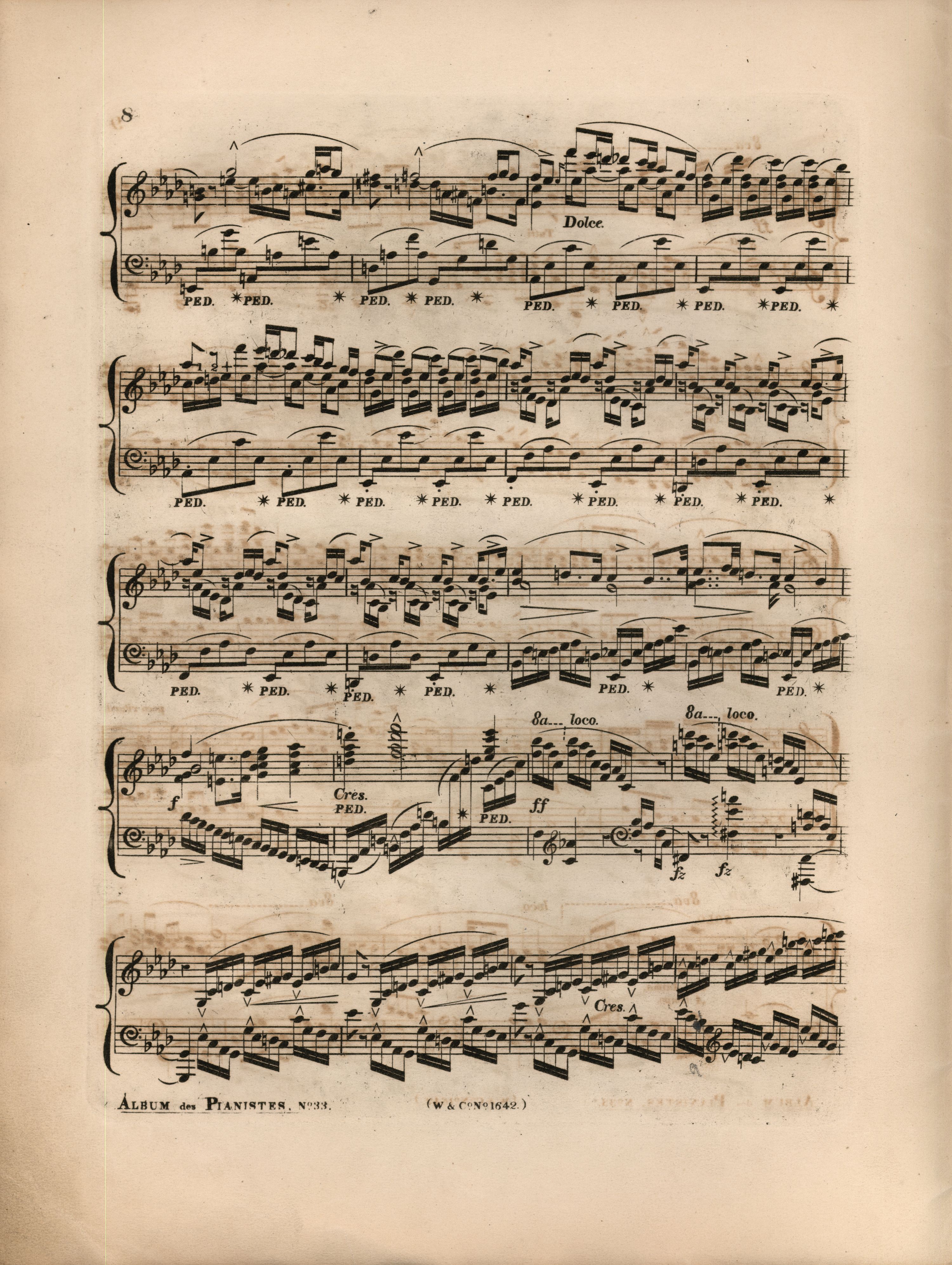



When interpreted literally, the slurs of A give the accompanying quaver figures a completely different shape than in subsequent analogous bars both here and in the recapitulation (bars 311 and 313). Since it seems to be highly unlikely that Chopin wanted to use the accompaniment in these bars differently than when repeating the phrase, we regard the notation as inaccurate or erroneous:
- it is difficult to say why the first slur in bar 161 embraces also the 5th quaver. It is the first figure without staccato on the bass note, so Chopin could have not had the already clear idea for slurring in this situation. The indications given by us as the version of A can be considered to be the then abandoned (already in bar 163), original version.
- the second slur in bar 161 and the first in bar 162 are very similar; since they concern the same notes, it can be assumed that the composer committed a mistake by confusing the groups, deceived by the absence of the 2nd half of bar 162, which was not written out.
- both slurs discussed above reach far beyond the last quaver in the group; it suggests that perhaps they should reach the beginning of the next figures. However, since this type of slurring does not appear in similar figures either before or after, we consider it to be an example of "flourish," which was frequent for Chopin's slurs.
Taking into consideration the above analysis, in the main text we give in bar 161 the same slurs as in analogous bar 163, whereas in bar 162 we do not interpret the slurs as pointing, but as embracing. Such slurs were introduced in GE2.
The engraver of GE1 (→FE→EE) treated the discussed slurs in the same way as all slurs around, which produced a good result only in the case of bar 161.
Compare the passage in the sources »
category imprint: Graphic ambiguousness; Differences between sources
issues: Inaccuracies in GE, Inaccurate slurs in A, GE revisions
notation: Slurs




